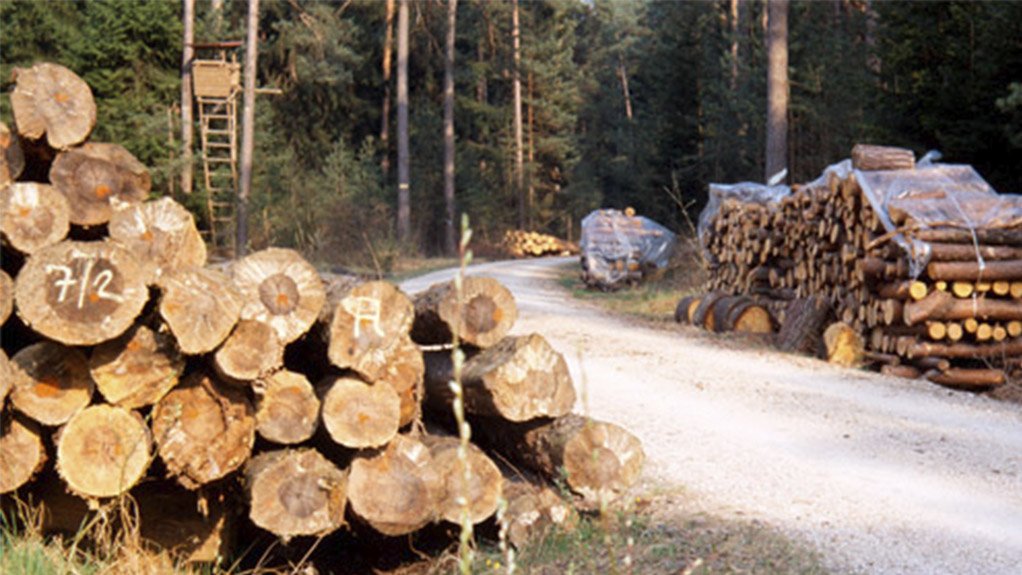Timber’s viability overlooked by developers


WOOD REDUCES CARBON OMMISIONS Carbon dioxide is removed from our atmosphere by wood plantations during their rotations of seven to 20 years.
It is estimated that two-billion metres squared of new building stock will be required every year between 2019 and 2025 to keep up with urban development and population growth.
This is according to a report by The Arup Journal: ‘Rethinking Timber Buildings: Seven perspectives on the use of timber in building design and construction’.
The report states that “space and resource constraints, climate change mitigation and resilience, and a greater focus on human well-being, among other factors, have stimulated new solutions and encouraged innovation”.
“We need to get away from the notion that building with wood is reserved for tool sheds or log cabins. “Timber is often overlooked by developers and architects as a viable, low carbon material for the local built environment. Yet, it ticks a number of boxes, not least of which being renewability,” says timber construction company Sawmilling South Africa executive director Roy Southey.
In South Africa, wood for structural timber comes from sustainably cultivated pine or Eucalyptus trees, otherwise known as commercial timber plantations or planted forests.
It is a myth that timber production causes deforestation. “Deforestation is different to sustainable forestry. Deforestation is the removal of trees or clearing of forests for commercial development, housing, firewood or agriculture without replanting,” he explains.
Sustainable forestry sees to it that trees are planted, grown and harvested in line with international certification standards and local legislation. According to Forestry South Africa, only 6% of the country’s total plantation area – 1.2-million hectares – is harvested annually. Felled trees are replaced in the same year by saplings, often at a ratio of 2:1. This means there is a constant supply of trees for productive purposes for years to come – all of them are sequestering ,absorbing and storing carbon as they grow.
South Africa is not a naturally tree-rich country like Sweden or Canada. There are only half-a-million hectares of indigenous forests scattered throughout South Africa or roughly 0.4% of the total land area in the country.
“If it wasn’t for the commercial planting of trees in the early 1900s, the country’s indigenous forests would have been eliminated many years ago for our fuel, furniture and fibre needs,” notes Southey.
A forestry landscape is far more complex and diverse than simply rows of planted trees. Only 70% of forestry-owned land is planted with trees with a significant proportion of the unplanted area reserved for biodiversity conservation, natural corridors, grasslands, riverine habitats, indigenous forests and wetlands.
When wood is sourced from a certified plantation, there will be a chain-of-custody. This provides a link between the buyers and sellers (from the forest to the point-of-sale), providing assurance that the product is sustainably sourced.
Trees are nature’s best carbon captors. South Africa’s plantations remove a significant amount of carbon dioxide from our atmosphere during their rotations of seven to 20 years.
This carbon remains stored in the wood – whether it is made into paper, a roof truss or engineered into cross-laminated timber for high-rise buildings.
With its excellent thermal insulation value, wood can act as a humidity regulator, absorbing moisture in wet conditions and releasing it when the air is dry.
Wood and natural materials deliver a certain degree of wellbeing, happiness and comfort that other materials cannot match. “One only needs to think how good you feel in a wooded area, green space or a timber building,” Southey says, alluding to the psychological hypothesis of ‘biophilia’.
The forestry value chain contributes R69-billion to the local economy annually with sawmilling supporting about 30 000 people in predominantly rural communities.
“Timber as a mainstream construction material is gaining momentum globally, however, perceptions need to be changed in South Africa,” says Southey.
He adds that wood is versatile and lightweight, making it ideal for modular volumetric prefabrication of low-income housing as well as larger homes and multistorey buildings.
All factors considered, wood brings something special but it can have a greater purpose – to reduce carbon emissions and provide us with durable built environments.
Article Enquiry
Email Article
Save Article
Feedback
To advertise email advertising@creamermedia.co.za or click here
Comments
Press Office
Announcements
What's On
Subscribe to improve your user experience...
Option 1 (equivalent of R125 a month):
Receive a weekly copy of Creamer Media's Engineering News & Mining Weekly magazine
(print copy for those in South Africa and e-magazine for those outside of South Africa)
Receive daily email newsletters
Access to full search results
Access archive of magazine back copies
Access to Projects in Progress
Access to ONE Research Report of your choice in PDF format
Option 2 (equivalent of R375 a month):
All benefits from Option 1
PLUS
Access to Creamer Media's Research Channel Africa for ALL Research Reports, in PDF format, on various industrial and mining sectors
including Electricity; Water; Energy Transition; Hydrogen; Roads, Rail and Ports; Coal; Gold; Platinum; Battery Metals; etc.
Already a subscriber?
Forgotten your password?
Receive weekly copy of Creamer Media's Engineering News & Mining Weekly magazine (print copy for those in South Africa and e-magazine for those outside of South Africa)
➕
Recieve daily email newsletters
➕
Access to full search results
➕
Access archive of magazine back copies
➕
Access to Projects in Progress
➕
Access to ONE Research Report of your choice in PDF format
RESEARCH CHANNEL AFRICA
R4500 (equivalent of R375 a month)
SUBSCRIBEAll benefits from Option 1
➕
Access to Creamer Media's Research Channel Africa for ALL Research Reports on various industrial and mining sectors, in PDF format, including on:
Electricity
➕
Water
➕
Energy Transition
➕
Hydrogen
➕
Roads, Rail and Ports
➕
Coal
➕
Gold
➕
Platinum
➕
Battery Metals
➕
etc.
Receive all benefits from Option 1 or Option 2 delivered to numerous people at your company
➕
Multiple User names and Passwords for simultaneous log-ins
➕
Intranet integration access to all in your organisation















